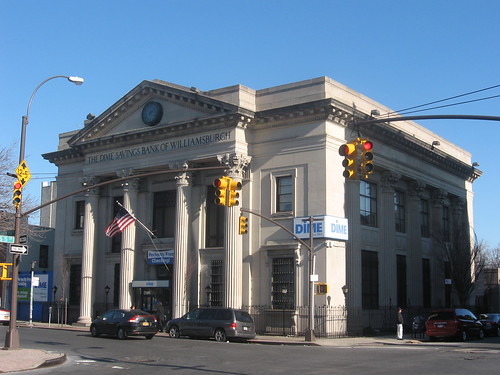Korean investment firm NH Investment & Securities is under contract to buy The Dime Residences in Williamsburg, Brooklyn, for $157.5 million, according to sources familiar with the transaction.
The sale does not include the retail (the landmarked bank building). This is the second big residential sale in Williamsburg in the past couple of weeks – given where rents are going, not surprising I guess.

